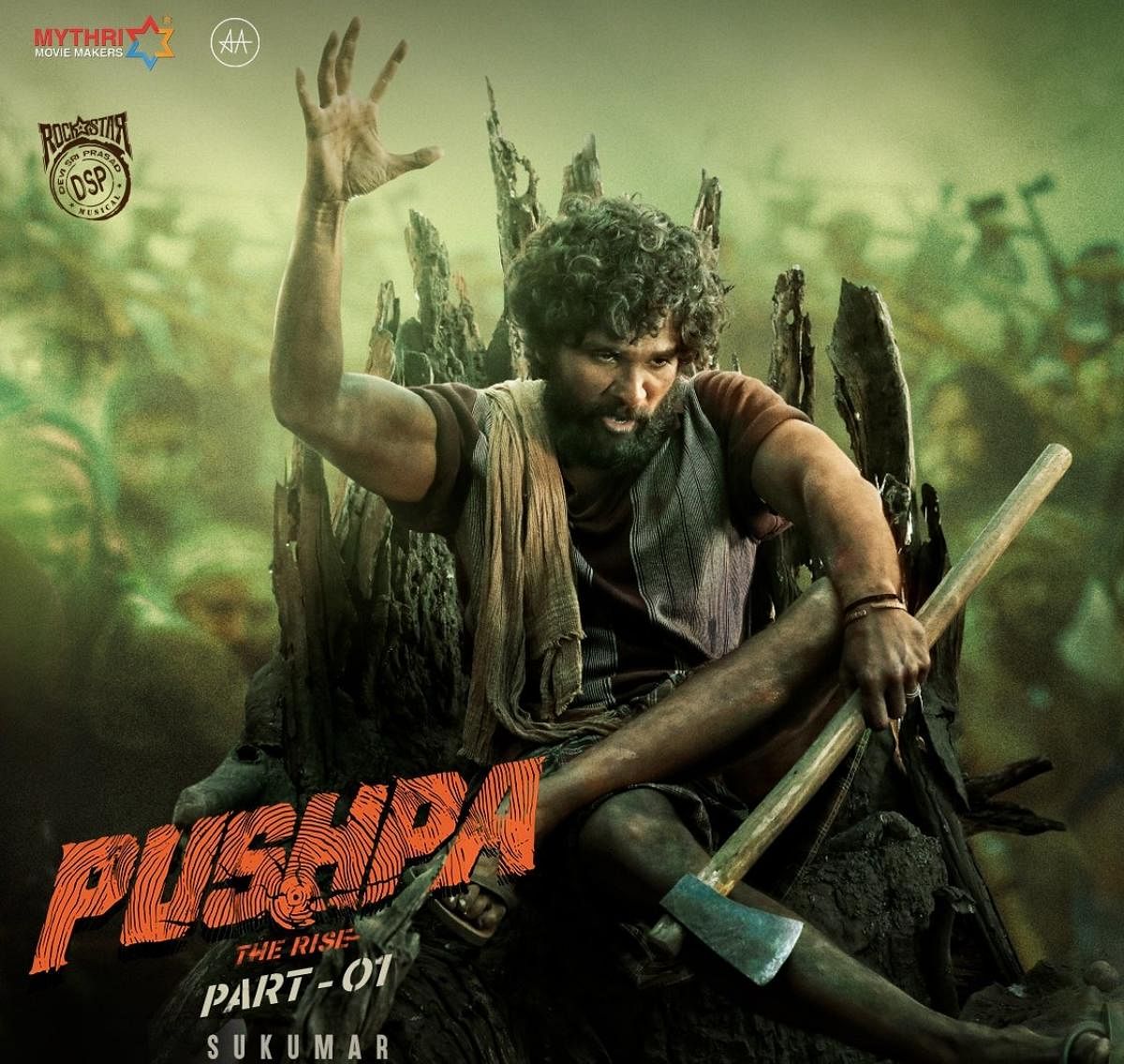
The Kannada dubbed version of Allu Arjun’s Telugu film ‘Pushpa’ struggled for screens in Bengaluru last week. Only one Kannada-dubbed show was available on the day of release. Across Karnataka, the Kannada version had eight shows in comparison to 200 in Telugu.
Upset with the disparity, Kannada activists started a campaign on Twitter with the hashtag #BoycottPushpaInKarnataka. The row laid bare many challenges peculiar to Karnataka.
It has been four years since the Competitive Commission of India (CCI) ruled against the six-decade-old informal ban on dubbing in the Kannada film industry.
The campaign must go beyond social media activism and understand the business dynamics, says film critic Kairam Vaashi.
Establishing a strong market in Bengaluru isn’t an overnight process. “In a cosmopolitan city like Bengaluru, the audience prefers watching a film in its original language. Expecting the audience to watch a dubbed film, especially when the dubbing quality isn’t up to the mark, is unreasonable,” he argues.
Ganesh Chetan of Kannada Grahakara Koota, a consumer forum that fought a legal battle against the dubbing ban, believes vested interests are at play. “How can you cut the supply and then say there is no demand”? he says.
He says many from within the Kannada industry fear dubbing into the language. “They think the more people watch dubbed content, the more they will distance themselves from Kannada originals. This insecurity is forcing them to oppose dubbed films,” he says.
Some say a nexus exists between big names in the Kannada film industry and distributors, and is coming in the way of Kannada-dubbed films. “Distributors have to shell out an extra Rs 2 crore for a Kannada-dubbed film so they try to create a perception that there is no demand for it in Karnataka,” says a pro-dubbing activist.
When Kannada centres prefer non-Kannada films, it is suicidal for the language, and for the Kannada film industry, says Ganesh.
His forum has now formed an association to support film makers willing to release Kannada-dubbed films in theatres.
“We are serious campaigners. We have formed an association parallel to the Kannada Film Chamber. It will support the production and distribution of dubbed films in Karnataka,” he explains.
The association will work towards nurturing voice artistes. “When we started off, there were just 20. Today the number has risen to 200. The idea is to enhance the quality,” he says.
Not many dubbed films have worked at the box office. The Kannada versions of ‘Sye Raa Narasimha Reddy’ and ‘Dabbang 3’ collected a gross Rs 2.5 crore to 3 crore.
Kannada-dubbed content on TV flourished during the early months of the pandemic when shooting was stopped. The serial ‘Mahabaratha’ was a big hit while ‘Jagamalla’, dubbed from Ajit Kumar’s Tamil movie ‘Viswasam’, enjoyed a TRP of nine points.
Suni, a successful commercial filmmaker, says: “Dubbing helps people from Tier 2 and Tier 3 cities enjoy blockbusters. Many aren’t familiar with English and Hindi. A film like ‘Spider-Man: No Way Home’ can be enjoyed by village children if it is released in their mother tongue.”
It remains to be seen how the anticipated sports drama ‘83’ and Rajamouli’s magnum opus ‘RRR’ will be received in Kannada. That latter is likely to get 100 shows across the state.
How did the dubbing ban come about?
The Kannada film industry was trying to find its feet in the 1950s. Just eight to 10 films were being made and released in a year. A majority of the films screened in Karnataka were made in other languages and dubbed into Kannada.
Although Kannada theatre was thriving, actors had few opportunities to migrate to films. That was the context in which Kannada organisations began to oppose dubbed films. When Dr Rajkumar, the biggest star in Kannada, joined the movement, an unofficial ban on dubbing came into existence in Karnataka.